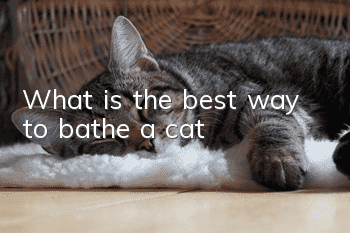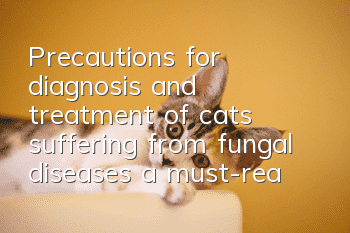Prevention and treatment of hypertrophic cardiomyopathy in pet cats

Cardiovascular disease is often a sudden killer of animals. Many owners often wonder why seemingly healthy cats die suddenly. This usually occurs after an emergency situation, such as a strange child chasing the cat, minor injuries, etc. Anesthesia, bathing and beauty treatment, firecrackers during the Chinese New Year, or medically necessary Baoding movements, etc. Doctors usually first suspect the possibility of cardiovascular disease, and the most common heart disease in cats is hypertrophic cardiomyopathy, which usually occurs in male cats and middle-aged to elderly cats. Persian cats may have a predisposition to it.
Affected cats may not have any symptoms when they are not sick. Once they become sick, they may have symptoms of heart failure, and/or thromboembolism, or even sudden death. Common symptoms seen by pet owners include acute onset of difficulty breathing, lethargy, anorexia, depression, inactivity, and reluctance to move. Hypertrophic cardiomyopathy may also cause thromboembolism, causing sudden paralysis of the hind limbs and incessant howling in pain.
In clinical practice, we often hear owners say: Our cat was fine, but it died in the morning. Or the cat suddenly dies while taking a bath in a beauty salon. Some cats suddenly develop heart failure and die during anesthesia or surgery. This is the terrible thing about feline hypertrophic cardiomyopathy. There may not be any clinical symptoms before. After the cat is stressed, , such as anesthesia, surgery, Baoding, bathing, fright, etc., may cause acute heart failure and sudden death.
Clinical veterinarians are frightened when encountering such cases, because any stimulation may cause tachycardia and acute cardiogenic shock. However, if left untreated, the cat will not survive, and the diagnosis It is necessary to carry out the treatment carefully, and how to measure it depends on the doctor's experience and clinical judgment; when necessary, the doctor will also give a very small amount of sedatives to help the cat calm down.
If a cat has symptoms of dyspnea, active diagnostic procedures are generally not carried out first. The cat will be kept in an oxygen therapy cage first, and the chest X-ray will be performed only after the cat's breathing is more stable and the blood color is better. If possible, an intravenous indwelling needle should also be installed and connected to an appropriate drip as an emergency route of administration. Doctors may see general cardiac enlargement or bilateral atrium enlargement, pulmonary venous distension, pulmonary artery enlargement, pulmonary edema, and possible pleural effusion on X-rays, but the heart size may also be normal or typical. If pulmonary edema occurs, the doctor will give drugs to relieve the symptoms of pulmonary edema; if pleural effusion occurs, thoracentesis may be required to remove the pleural effusion.
If the cat’s respiratory rate continues to decrease and stabilizes, the doctor may perform a cardiac ultrasound scan, which may reveal atrial enlargement, ventricular diaphragm thickening and/or left ventricular freewall thickening, and papillary shape. Papillary muscle hypertrophy is considered a complete diagnosis at this time. Therefore, the treatment of hypertrophic cardiomyopathy in cats is to first carry out symptomatic treatment.Stabilize the cat and then consider diagnostic work after it is stable. If these diagnostic procedures are performed in a hurry, most cats will die during the diagnosis process.
Feline hypertrophic cardiomyopathy can be divided into primary and secondary. Primary refers to myocardial hypertrophy without any other causes, mostly related to genetics; secondary hypertrophic cardiomyopathy is due to It is caused by hyperthyroidism, so once the cat is stable, a thyroid function test should be performed to determine whether it is primary or secondary hypertrophic cardiomyopathy.
Secondary hypertrophic cardiomyopathy has a better prognosis. If the stimulation of the thyroid is properly controlled, the myocardial hypertrophy can be slightly alleviated and the myocardial hypertrophy can be prevented from continuing. If hypertrophic cardiomyopathy is primary or complicated by thromboembolism, the prognosis is poor, but some cats can survive up to three years after diagnosis. If the cat is lucky enough to survive the acute attack, it must continue to take medication for control and undergo regular follow-up visits for evaluation. At the same time, unnecessary urgency should be avoided.
In terms of clinical experience in treating hypertrophic cardiomyopathy, most of the cats with the disease will die on the day of first aid. Most of the cats that survive are discovered during early health examinations, or are mild-mannered and difficult to treat. Nervous cat.
Petcat.com reminds everyone that early diagnosis of hypertrophic cardiomyopathy seems to be the focus of treatment. Regular annual complete health examinations may be able to detect hypertrophic cardiomyopathy early. Doctors can judge cardiac images based on chest X-rays. Whether there is enlargement, owners must also pay attention to observe whether cats have early symptoms such as exercise intolerance, easy panting, accelerated breathing, or sudden loss of appetite and weight. Once abnormal symptoms are observed, they must seek medical attention immediately to rule out hypertrophic cardiomyopathy. possibility. For cats over 4 years old, thyroid function testing must be a priority, and the offspring of affected cats should also be closely monitored. After all, hypertrophic cardiomyopathy may be hereditary.
- How to train a kitten to drink water?
- Why does a cat suddenly poop everywhere?
- What should I do if my cat eats the nipple?
- Where do cats like their owners to touch the most?
- Top 10 Reasons Why You Should Get a Ragdoll Cat
- Why is my cat leaking urine drop by drop?
- Why is my cat’s eye mucus yellow and sticky?
- What happens when an exotic short-haired cat has diarrhea after eating canned food? Tips on raising short-haired cats!
- 6 possible reasons why your cat may cry
- What should I do if my Siamese cat has a hoarse voice? How to recover quickly?



